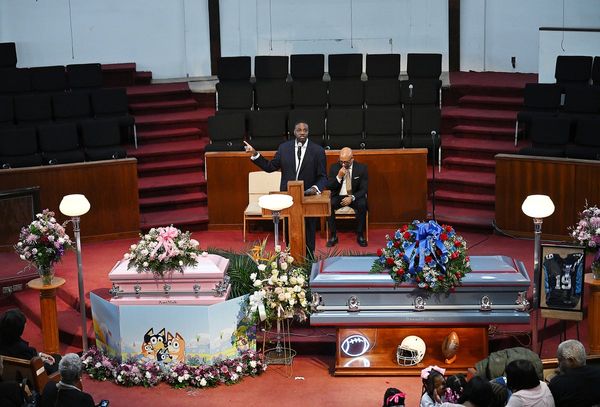Victoria's Environment Protection Authority has found asbestos in a conservation area in Melbourne's west, where critically endangered grasslands were destroyed earlier this year.
The Truganina property had been home to some of the last remaining native grasslands in Victoria, which once covered nearly a third of the state.
Much of the grasslands on the Truganina land were destroyed earlier this year when the property was covered in soil, prompting a significant and ongoing investigation by state and federal environment departments as well as Melton City Council and the EPA.
Now the ABC can reveal the EPA discovered asbestos and other industrial waste materials in soil samples taken from the conservation area while investigating the destroyed grasslands.
"We will continue to work on the issue to ensure risks are properly addressed and will take all appropriate enforcement action until there is a long-term, satisfactory outcome," the regulator said in a statement.
The EPA said it has issued the property owner and the company that allegedly moved the soil with statutory notices "requiring more information be provided to assist EPA's investigation and decision-making."
It said it had put up signage and notified nearby residents, who have not been impacted.
Owner says it didn't know about asbestos, blames contractor
While the land was protected for conservation under an agreement between the state and federal governments, it had remained privately owned and was purchased last year for $11 million by Centreland Agriculture, a company linked to property developer Peter Wu.
In a statement Centreland Agriculture said "earlier this year a contractor brought contaminated soil onto the property without the approval or knowledge of Centreland Agriculture."
"Upon learning from the EPA that this had occurred Centreland Agriculture engaged a specialist consultant to provide recommendations on how to ensure relevant safety standards were followed."
It said it is working with the EPA and was "extremely disappointed in the actions of the contractor."
The ABC has not been able to contact the contractor.
Last month Centreland Agriculture told the ABC it performed "mitigation work" on the property to protect it from bushfires and it said it had believed the land was zoned for urban development because of information on a Victorian government website and information provided to it by Melton Council.
"Conflicting information about the status of the land has now been raised which we are currently reviewing, along with information provided to Centreland Agriculture Co. during the purchase," it said at that time.
Environmentalists devastated by latest development
Grassy Plains Network facilitator, Adrian Marshall said he was "shocked and then angry" when he learnt asbestos had been found on the Truganina conservation area.
He said it was important authorities fully investigated how asbestos ended up on the land.
The environmentalist said he wanted to see greater oversight of these conservation areas which are still privately owned and for the Victorian government to speed up the purchase of these properties.
A Victorian government spokesperson said the government "takes seriously any action that leads to the damage of conservation areas" and it is supporting the investigation into that Truganina site.
The spokesperson said the government's land acquisition is "adequate to offset the current rate of growth area clearing."
RMIT University conservation scientist Sarah Bekessy said the Truganina land contained a critically endangered eco-system that should have had the highest level of conservation protection.
"The loss of that area … is an extraordinary loss of natural heritage" she said.
Professor Bekessy said how authorities handled this case could be of national significance, because of the way the land was protected for conservation.
It was protected under what is known as a strategic assessment, which is an agreement between the state and federal governments to protect areas with the highest conservation values.
Professor Bekessy said the federal Environment Protection and Biodiversity Conservation Act increasingly uses these kind of assessments to protect land across the country.
"So this is potentially a test case to understand how effective the EPBC Act is at protecting these critically endangered eco-systems under these agreements," she said.







